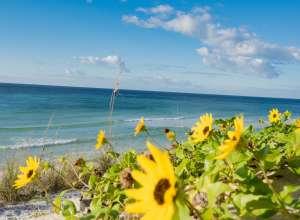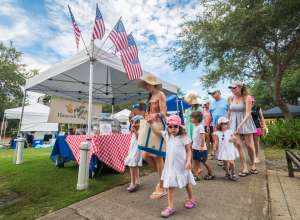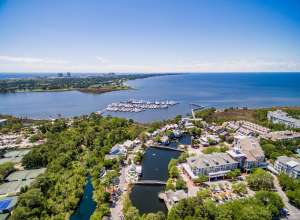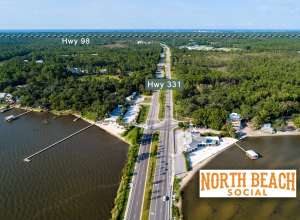Story
The Sea Turtles of South Walton
August 13, 2012 by Marla Burns
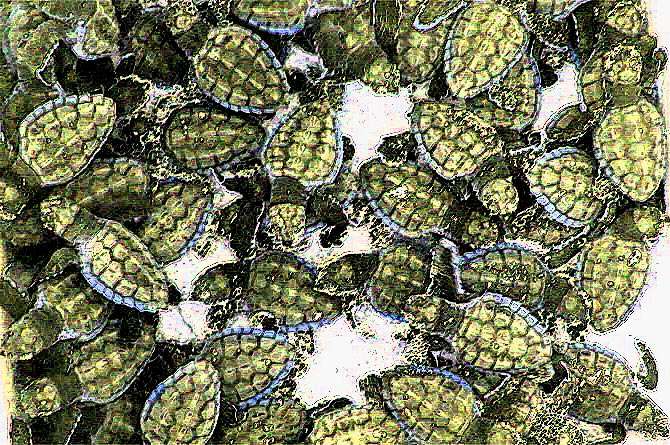
It’s sea turtle nesting season in Florida and in South Walton we're having an incredible year with over 100 nests, shattering the previous record of 58. Thanks to the consistent efforts of South Walton Turtle Watch, our small group of dedicated volunteers is making a difference in the survival of several species of sea turtles.
Most of the adult turtles have nested, and babies are hatching all up and down our beaches right now. It's one of the miracles of nature we are so privileged to witness in our SoWal paradise!
There are five different species of sea turtles that nest on Florida’s beaches - Loggerhead, Kemp’s Ridley, Green, Leatherback and Hawksbill. All are considered either endangered or threatened, and are protected by Federal law.
Nesting season runs May through October and just before sunrise every single morning, volunteers walk the beaches looking for turtle tracks. Spotting them is not easy considering that human, bird, crab, canine, and feline, among other, footprints on the sand can obscure the tracks.
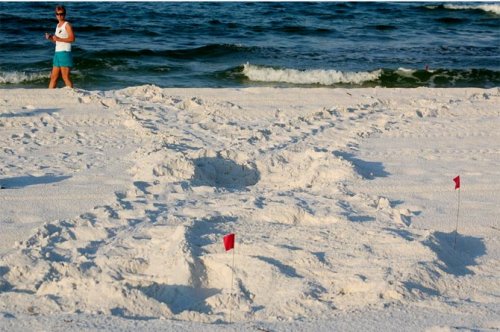
Once a track is found, permitted volunteers determine what type of sea turtle, based on those tracks, where the actual nesting site is, and then mark the nests with stakes. Beginning at 50 days, the nests are closely monitored for signs of movement (an indentation), as well as signs of predators like crab holes, footprints, or ants for example. Beyond 50 days, volunteers start looking for hatchling tracks that are hopefully headed toward the surf.There are usually 80-120 eggs per nest, but sadly only about one in 1,000 turtles survive to adulthood. The hatchlings face many dangers just trying to get to the water, and they can die of dehydration or be attacked by predators if they don’t get there fast enough.
Nesting adult turtles have a hard time navigating around obstructions such as recreational gear (tents, chairs, umbrellas, floatation devices, etc.) and trash people leave behind. They often return to the water without laying their eggs due to this kind of human interference. Hatchlings, as well as adults, can get physically caught up in the obstructions, become disoriented, and at times perish as a result.
Digging holes in the sand is great fun for kids but can be deadly to sea turtles and hatchlings that can fall in and get trapped. If you or your kids dig holes, please be sure to fill them in before leaving the beach.
Another challenge turtles face is artificial lighting. This has been a contentious issue in our county for years, as communities grow along the coast. Sea turtles are instinctively drawn toward the brightest light they see to guide them safely towards water. On unpopulated beaches, this direction is the light of the horizon. In populated areas, both hatchlings and adults can end up on local streets, in people’s carports, in any number of areas where they’ve wandered toward the brightest light source, which can prove fatal in many cases.
When you visit our beaches during turtle nesting season, please turn off all beach facing lights at night, and refrain from using white light flashlights on the beach. Be sure to use red light flashlights. Adults will nest and hatchlings will then head toward the water undeterred, as sea turtles can’t easily see light in the red spectrum.
Three days after a nest hatches, permitted volunteers dig up the nest to search for any hatchlings that didn’t make it out of the nest. If additional hatchlings are found, they are put into a cooler with damp sand. After sundown, they are released in front of the nest, while volunteers carefully watch their trek to the water.
Why aren’t remaining hatchlings just taken to the water’s edge for release instead of watching them struggle to get there? Because their first trek to the water imprints their home beach into the hatchlings. Once the female hatchlings are grown, they will return to lay their nests on the very same beach, year after year.
Below are some guidelines to follow when encountering endangered sea turtles:
What should I do if I find hatchlings wandering in a road, parking lot, or in directions other than toward the water?
Call the Florida Fish and Wildlife Conservation Commission (FWC) Division of Law Enforcement at 1-888-404-FWCC or *FWC from your cell phone, or South Walton Turtle Watch leader Sharon Maxwell at 850-685-6281.
What should I do if I find sea turtle hatchlings on the beach?
- Watch from a distance.
- Allow them to crawl to the water on their own.
- Leave them in their nest.
- Keep all lights off.
What should I do if I see a sea turtle nesting?
- Stay behind her at a distance and remain quiet.
- Don't use any lights, including flashlights, flash photography, or video equipment.
- Don't put your hands on or near the turtle. Any distractions may frighten and disorient her, causing her to return to the water before completely covering and camouflaging her nest.
Who should I call if I find a stranded turtle?
Call the Florida Fish and Wildlife Conservation Commission (FWC) Division of Law Enforcement at 1-888-404-FWCC or *FWC from your cell phone or South Walton Turtle Watch leader Sharon Maxwell at 850-685-6281.
FInd more info at South Walton Turtle Watch: http://southwaltonturtlewatch.org.


